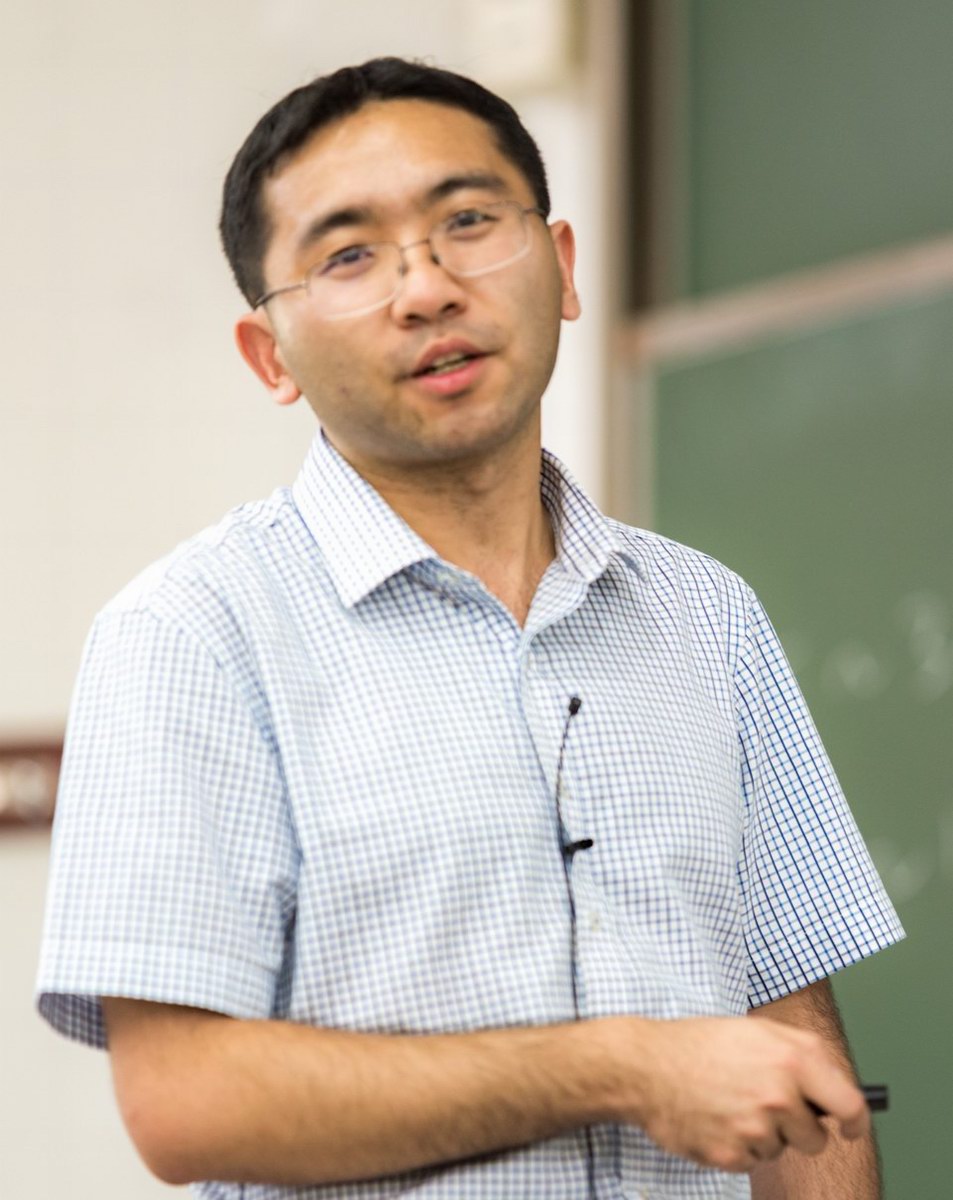
Xuening Bai
Professor, Institute for Advanced Study, Tsinghua University
Tel: +86-10-62788981
Email: xbai(at)tsinghua.edu.cn
Homepage:http://i.astro.tsinghua.edu.cn/~xbai/
Education background
2007.8-2012.8:Ph.D. Princeton University, Dept. of Astrophysical Sciences (Advisor: James M. Stone)
2003.8-2007.7:B.S. Tsinghua University, Dept. of Physics (Academic Talent Program)
Experience
2023.8-now, Professor, Institute for Advanced Study, Tsinghua University, and jointly with Tsinghua Department of Astronomy
2017.8-2023.7: Member, Institute for Advanced Study, Tsinghua University, and jointly with Tsinghua Department of Astronomy
2015.8-2017.7: Research Associate & Lecturer, Institute for Theory and Computation, Harvard-Smithsonian Center for Astrophysics
2012.9-2015.7: Hubble Fellow, Institute for Theory and Computation, Harvard-Smithsonian Center for Astrophysics
Areas of Research Interests/ Research Projects
Theoretical and computational astrophysics. Research areas include:
1. Planet formation: gas dynamics, chemistry and evolution of protoplanetary disks, dust dynamics and transport, planetesimal formation, core accretion, planet-disk interaction
2. Plasma astrophysics: accretion disks, magnetized disk winds, pulsar physics, particle acceleration in collision less shocks, cosmic-ray transport and feedback
3. Computational astrophysics: magnetohydrodynamics, particle-in-cell methods
Honors And Awards
2012-2015 NASA Hubble Postdoctoral Fellowship
2011 Charlotte E. Proctor Honorific Fellowship, Princeton University
2010 Young Scientist Award, First Sant-Cugat Forum on Astrophysics
2009-2012 NASA Earth and Space Science Fellowship
2007 Graduate with distinguished honor & Chi-Sun YEH Award, Tsinghua University
Academic Achievement
Total publication:over 40, including 2 in Science, 33 in the Astrophysical Journal series, 3 in Monthly Notice of Royal Astronomical Society, and 2 review chapters. Total citation: over 1800 (NASA ADS) / over 2000 (Google Scholar). H-index: 24. These include 20 first-author publications for which the H-index is 17.
My full publication list:
NASA ADS
Google Scholar
Representative Papers:
1. Gas dynamics of protoplanetary disks
“Global Simulations of the Inner Regions of Protoplanetary Disks with Comprehensive Disk Microphysics”, Bai, X.-N., 2017, ApJ, 845, 75 (30pp)
“Lifetime of the Solar Nebula Constrained by Meteorite Paleomagnetism”, Wang, H., Weiss, B. P., Bai, X.-N., et al., 2017, Science, 355, 623
“Magneto-thermal Disk Winds from Protoplanetary Disks”, Bai, X.-N., Ye, J., Goodman, J. and Yuan, F., 2016, ApJ, 818, 152 (20pp)
“Wind-driven Accretion in Protoplanetary Disks. I. Suppression of the Magnetorotational Instability and Launching of the Magnetocentrifugal Wind”, Bai, X.-N. And Stone, J. M., 2013, ApJ, 769, 76 (21pp)
2. Dust dynamics and planetesimal formation
“Particle-gas Dynamics with Athena: Method and Convergence”, Bai, X.-N. and Stone, J. M., 2010, ApJS, 190, 297 (14pp)
“Dynamics of Solids in the Midplane of Protoplanetary Disks: Implications for Planetesimal Formation”, Bai, X.-N. and Stone, J. M., 2010, ApJ, 722, 1437 (23pp)
3. Chemistry in protoplanetary disks
“Turbulent-diffusion Mediated CO Depletion in Weakly Turbulent Protoplanetary Disks”, Xu, R., Bai, X.-N. and Oberg, K., 2017, ApJ, 835, 162 (8pp)
4. Planet formation in protoplanetary disks
“Pebble Accretion in Turbulent Protoplanetary Disks”, Xu, Z., Bai, X.-N. and Murray-Clay, R., 2017, ApJ, in press
5. Astrophysical accretion disks
“Local Study of Accretion Disks with a Strong Vertical Magnetic Field: Magnetorotational Instability and Disk Outflow”, Bai, X.-N. and Stone, J. M., 2013, ApJ, 767, 30 (18pp)
6. Particle acceleration in collisionless shocks
“Magnetohydrodynamic-particle-in-cell Method for Coupling Cosmic Rays with a Thermal Plasma: Application to Non-relativistic Shocks”, Bai, X.-N. Caprioli, D., Sironi, L. and Spitkovsky, A., 2015, ApJ, 809, 55 (22pp)
7. Physics of the pulsar magnetosphere
“Modeling of Gamma-ray Pulsar Light Curves Using the Force-free Magnetic Field”, Bai, X.-N. and Spitkovsky, A., 2010, ApJ, 715, 1282 (20pp)